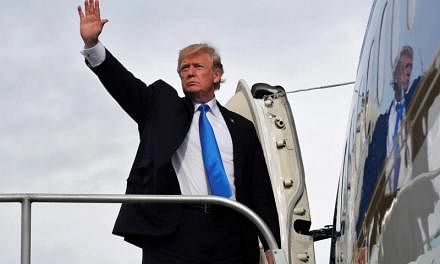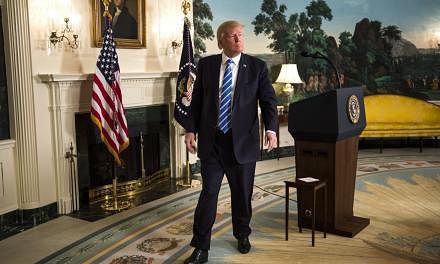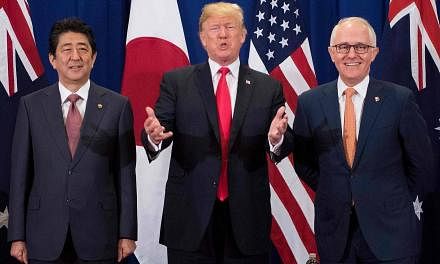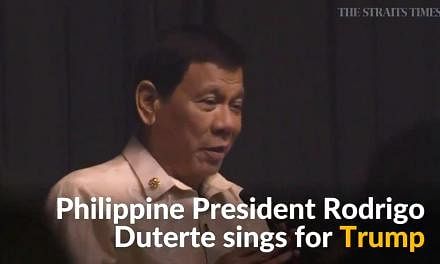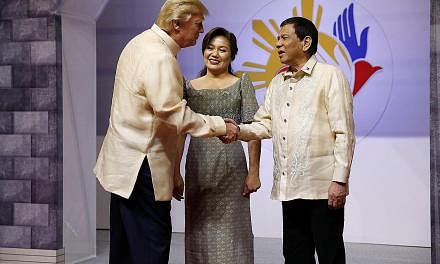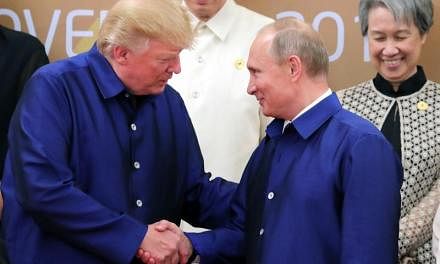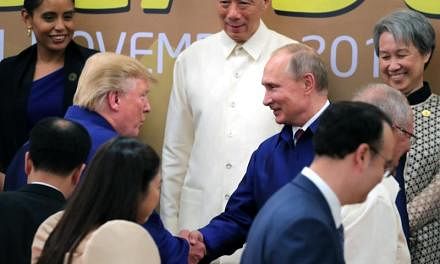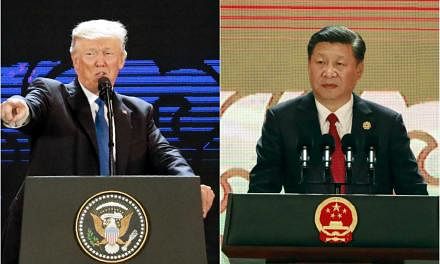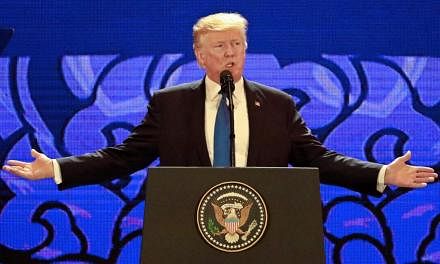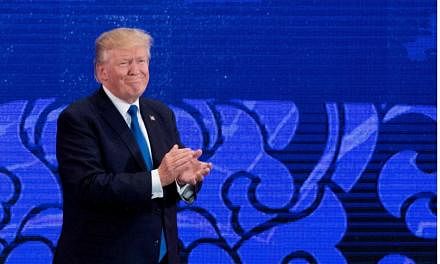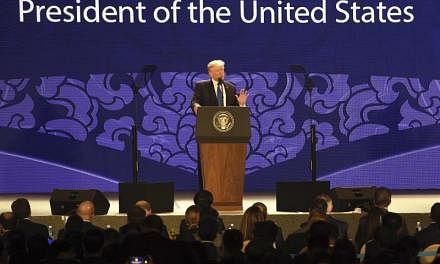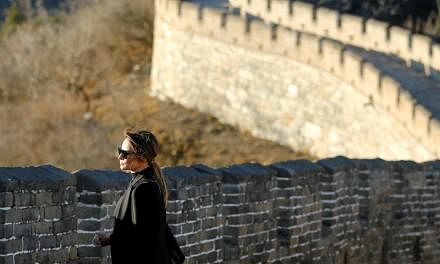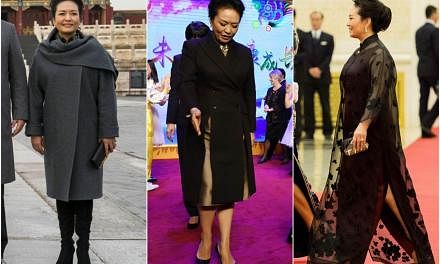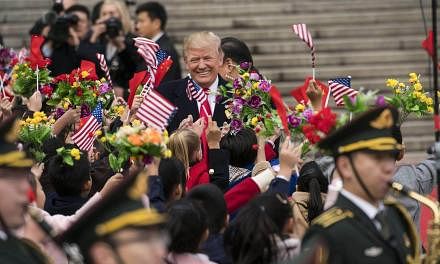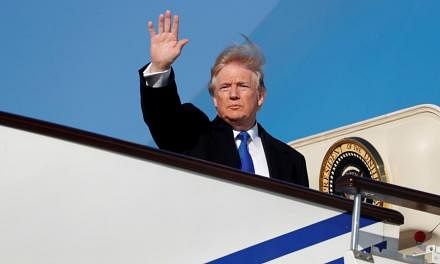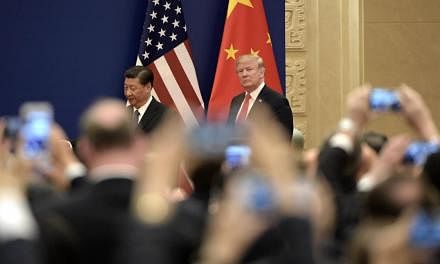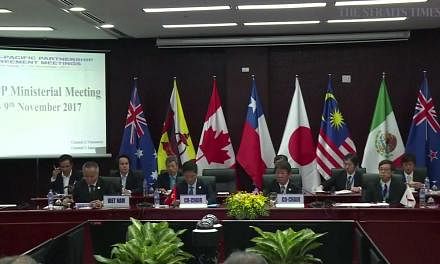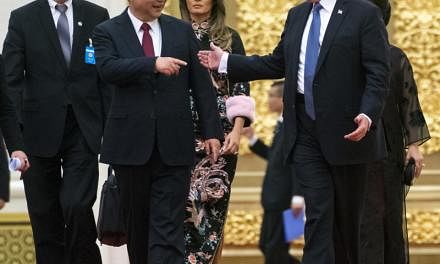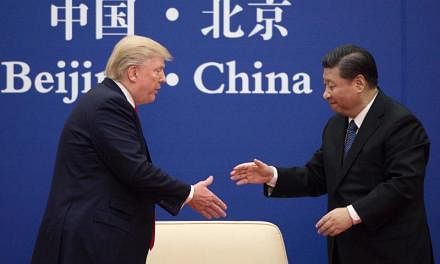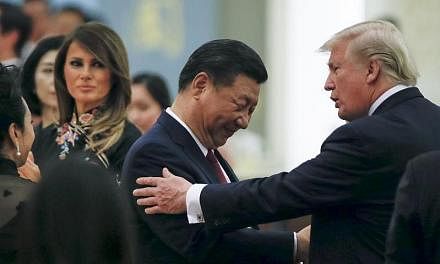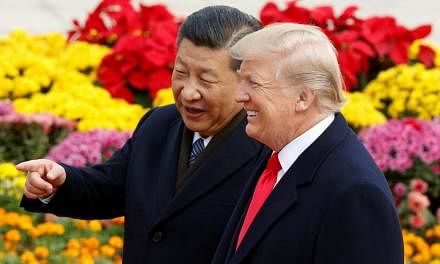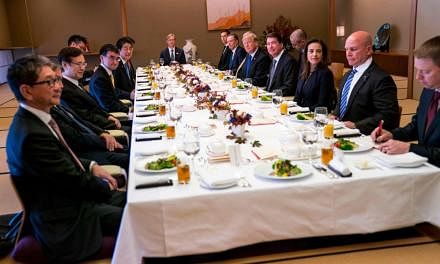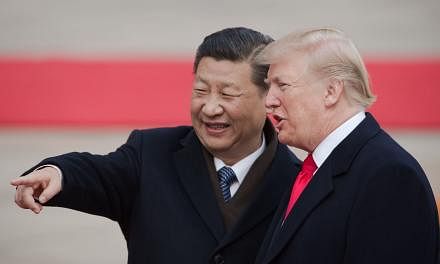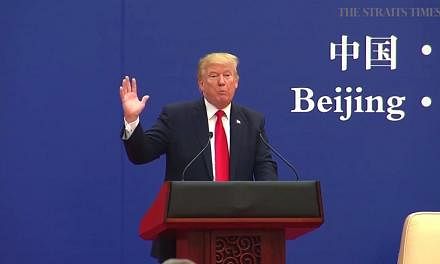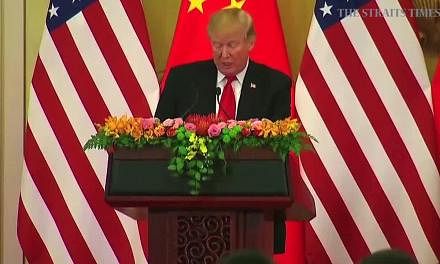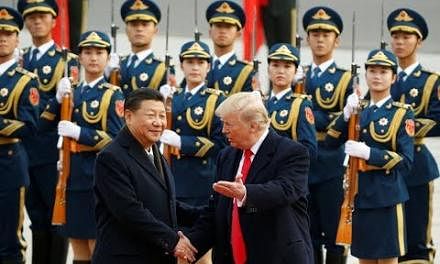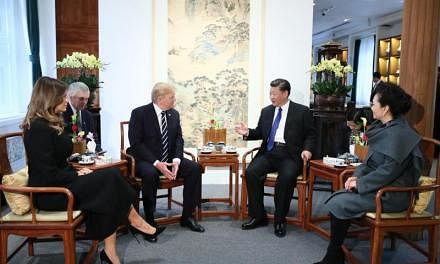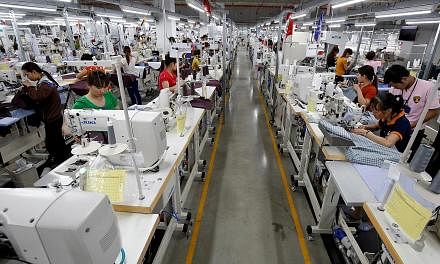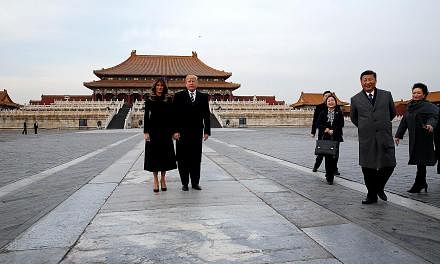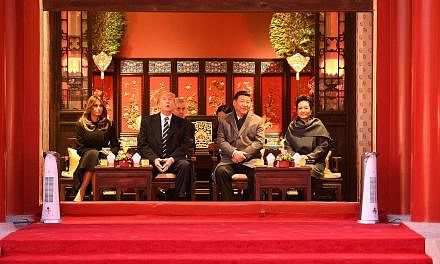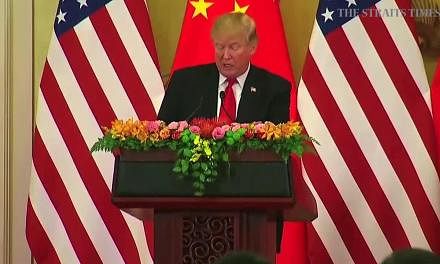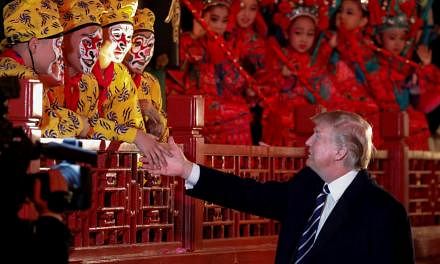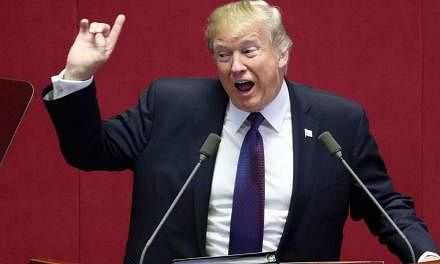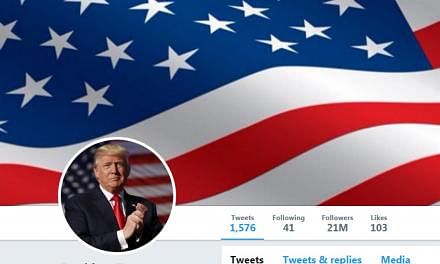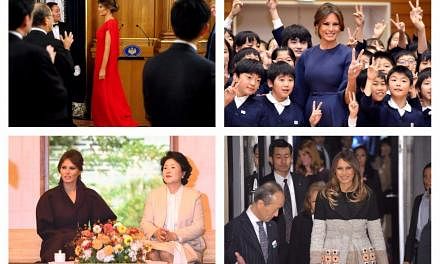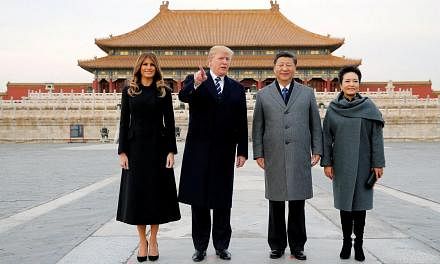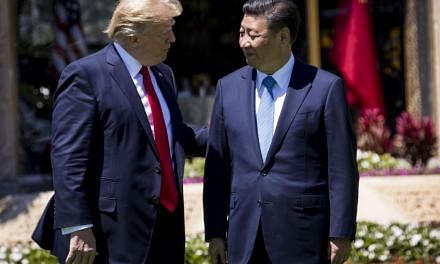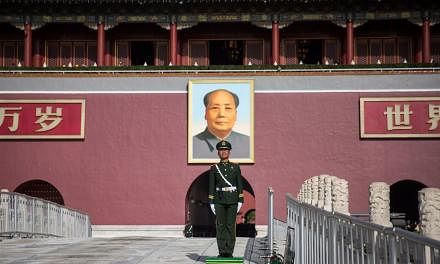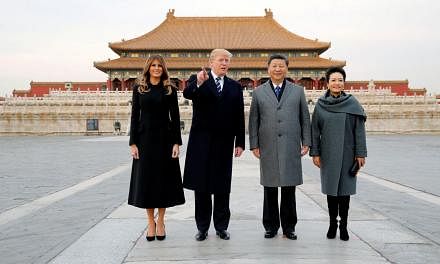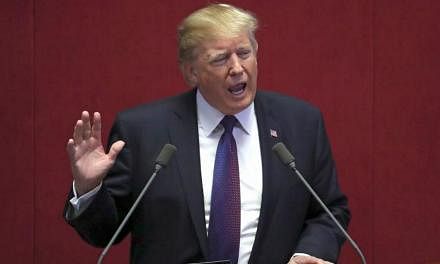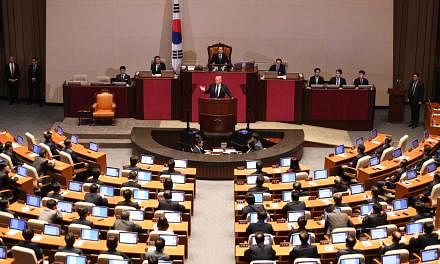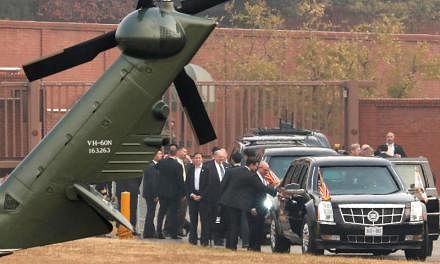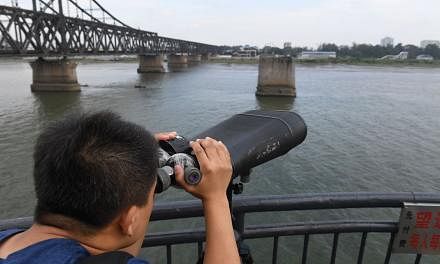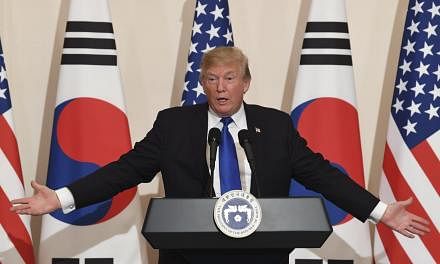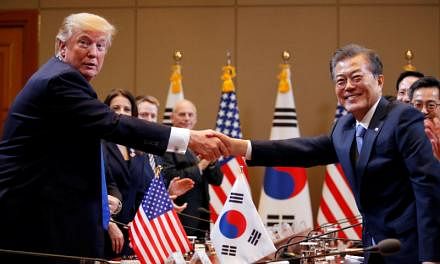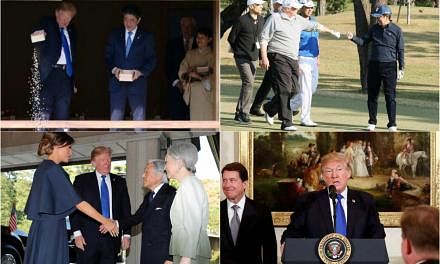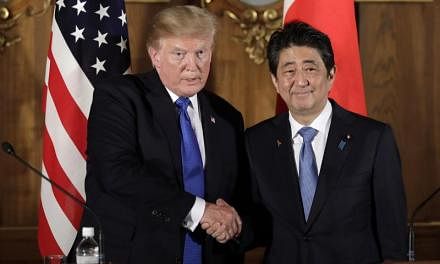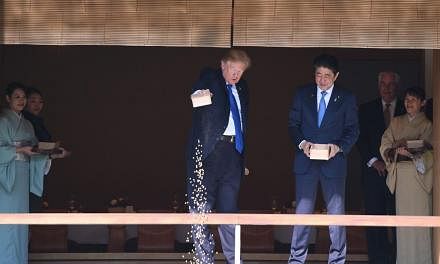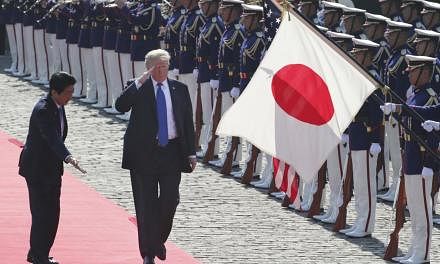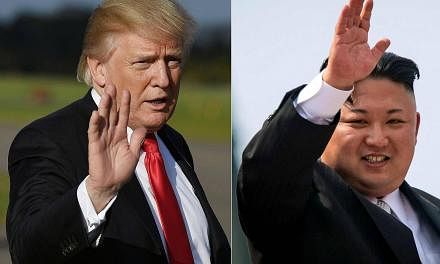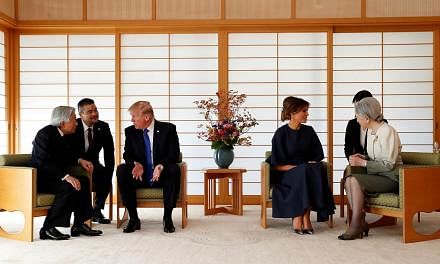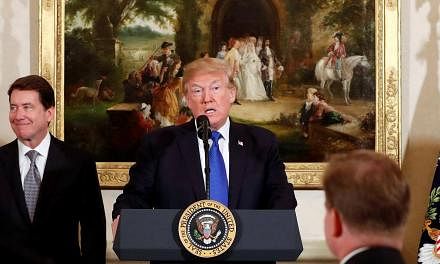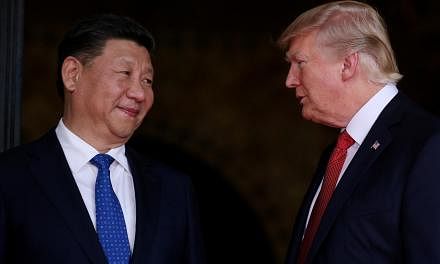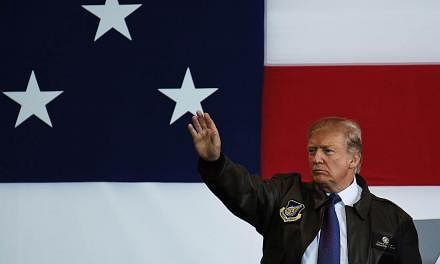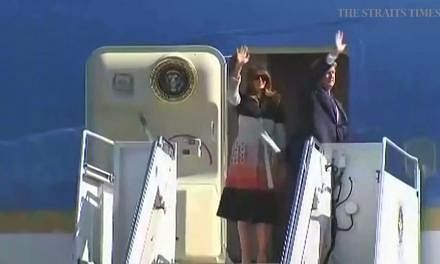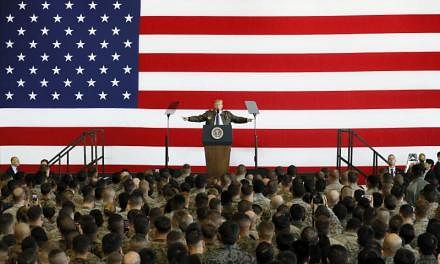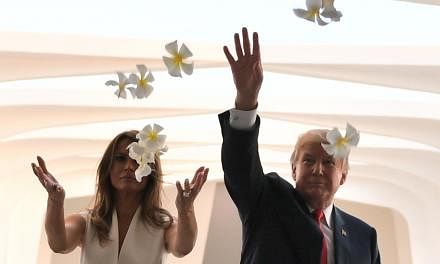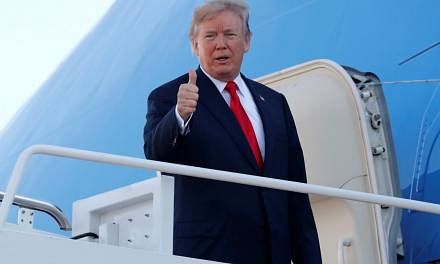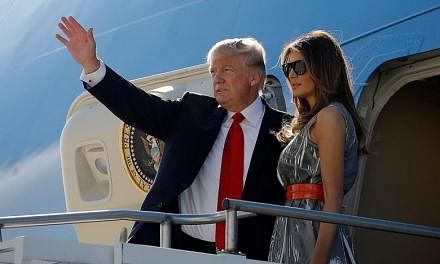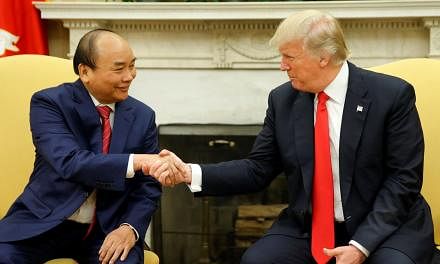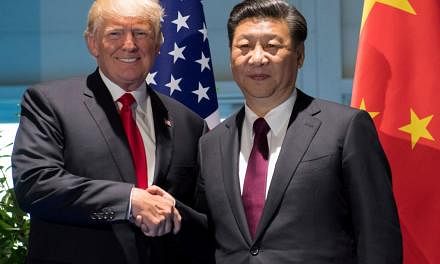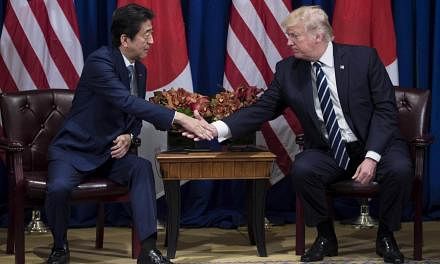US President Donald Trump will make his first visit to South-east Asia when he arrives in Vietnam tomorrow for the Apec leaders' meeting in Danang, followed by a bilateral programme with Vietnamese President Tran Dai Quang in Hanoi.
Occurring amid a US president's longest Asia trip since 1991, high-profile stops in Beijing, Seoul, and Tokyo may grab much of the attention. Mr Trump will likely channel the usual themes: promotion of US defence and industrial interests; signalling about "America First" and the need to address trade deficits with countries like Vietnam; and projects such as expanding the region to the "Indo-Pacific". Asia-Pacific watchers, however, should sharpen their focus on Vietnam for other reasons, not the least because of its importance for the region's future economic architecture.
Mr Trump is an awkward fit in South-east Asia, as the style, if not the substance, of his Asia policy exacerbates fears of voluntary US withdrawal from the field. Loud advocacy of bilateralism also falls flat in a region that has made multilateralism the touchstone of its foreign policy traditions. Mr Trump's decision to withdraw the United States from the Trans-Pacific Partnership (TPP) was a major blow in Vietnam, the country projected as among the biggest winners from the landmark trade and investment pact.
The spectre of US strategic - if not military - abrogation will be particularly acute at Apec, as most eyes will be on the meeting's margins, where the remaining TPP signatories will meet amid reports of growing momentum for a "TPP-11" solution. Initially, the TPP absent the US looked dead and buried, and Vietnam even announced it would not participate without the world's largest economy. Since then, however, Japanese leadership has helped the remaining signatories chart a path forward. This will involve difficult choices, as a diverse slate of members have to strike the right balance between revising the agreement to their advantage and leaving it intact to speed a hoped-for future US re-entry.
What made Vietnam's inclusion in the TPP so intriguing, however, was its status as a rapidly growing emerging economy that even now is still working to transition to market institutions and unwind its dependence on state capitalism. The TPP's measures would have set higher standards and created novel architecture to support these efforts in a way not possible under existing frameworks such as the WTO Doha round.
Although not South-east Asia's largest or fastest growing economy, Vietnam's is a good bet to emerge as among its most important, especially because of its links to the global economy. Since 2010, annual GDP per capital growth has been 6.5 per cent, after clocking nearly 8 per cent during the 2000s. Vietnam, now a middle-income country, has made impressive progress on reducing poverty and expanding education. Students have performed unusually well in Stem disciplines (Science, Technology, Engineering and Mathematics) and on some indicators, such as Pisa assessments, outrank developed countries. Its domestic market is increasingly attractive with 90 million citizens with strong middle-class growth.

Economic openness and a focus on carving out and exploiting Vietnam's position in global value chains have helped fuel this ascent: foreign investment and a web of more than 16 FTAs have underpinned a massive expansion of Vietnamese exports. Merchandise trade has grown to more than 170 per cent of GDP, well ahead of regional peers and trailing only regional entrepots like Singapore and Hong Kong. Vietnam is the second-largest supplier of apparel to the US, Japan, and South Korea. Samsung manufactures nearly one-third of its smartphones in Vietnam; smartphones and parts represent 20 per cent of total exports.
The path has, however, created new challenges. The World Bank found only 30 per cent of the gross value of electronics exports is domestically added as some products are essentially assembled in Vietnam from largely imported inputs. In textiles, domestic value added is sapped by structural supply chain breaks, with a cascade of raw materials and intermediate inputs exported and re-imported before finishing. Although Mr Trump sees Vietnam's US$32 billion (S$44 billion) surplus with the US, much of which is garments, the flipside is more than US$60 billion of imports from China, on which this industry relies for inputs, technology, and even production lines.
Domestic productivity, including within a beleaguered private sector, is low, while the productivity challenged state-owned sector commands half of all investment but only 5 per cent of total employment. More than 90 per cent of jobs are in small and medium-sized enterprises, virtually all of which are small scale and lacking in access to credit, land, and technology. Exports have boomed, but backward linkages into the domestic private sector are limited.
As a result, the TPP loomed large for Vietnam, a testament of its willingness to sign up for a "high quality" agreement despite its lower middle-class development status and single-party system. Indeed, Vietnam agreed to strict rules on intellectual property, labour institutions and public procurement that few developing countries would be inclined to accept. The attraction, despite the pain, was not only market access (especially to the US), but also tools to address the ingrained dominance of state capitalism and ineffective institutions. Preferential treatment for goods with inputs sourced from TPP countries (or within Vietnam) would also help in-source suppliers' investment. Already, during 2014-2016, an estimated US$5 billion of foreign direct investment (FDI) flowed from China into Vietnam's garment and textiles sector as suppliers positioned themselves to leverage gains from TPP.
In the context of Vietnam's economic history, this approach has precedent. Leaders have deployed strategic engagement with the world economic system to not only attract investment and grow exports, but also to push forward economic restructuring at home. Vietnam's 2007 WTO ascension was preceded by several years of in-depth renovation of its commercial regulations, some of which went well beyond what was technically required to join the WTO. It is inaccurate to portray such international agreements as drivers of change, but instead as part of policymakers' strategy to make restructuring more palatable in the eyes of sceptical vested interests. Such agreements - like TPP - also often include generous technical assistance to assist Vietnam in complying with its new commitments.
A successful effort to stand up, TPP-11 - and Vietnam's membership in this group - will have important consequences for the future of the region's economic architecture. Enshrining an approach focused on upgrading institutions and addressing the less beneficial aspects of a global value chain strategy would not only benefit Vietnam, but also all other developing economies that will eventually sign up. That this can be accommodated within a proposed trade and investment regime underpinned by quality and mechanisms to address barriers "beyond the border" is in the interests of developed countries and should be supported.
As a result, regional observers should not let the inevitable heat and light of President Trump's visit to overshadow the importance both of Danang as well as Vietnam's broader economic story. Vietnam, which earlier this year became the first South-east Asian country to secure a visit to Washington, has proven particularly adept at managing ties in the Trump era. With any luck, the Hanoi trip will include sufficient bilateral goodies to satisfy the president's more destructive impulses. Undoubtedly, the country also has clear security imperatives at stake and must continue to push for continued US regional engagement. But, on the economic front, however, while the self-proclaimed deal-making US president will continue his loud celebration of bilateral deals, countries that benefit from a multilateral approach to economic openness would be well advised to pay close attention to Vietnam.
• The writer is a Research Fellow at the Lowy Institute, which will soon publish his paper on Vietnam's economic challenges.
